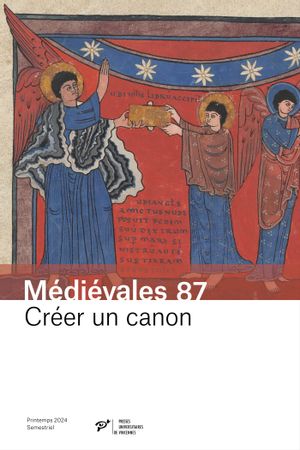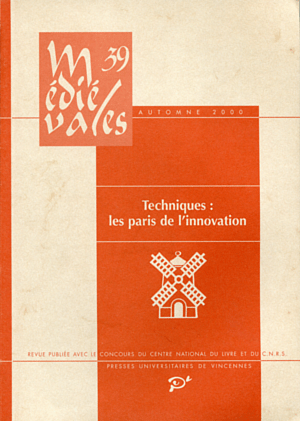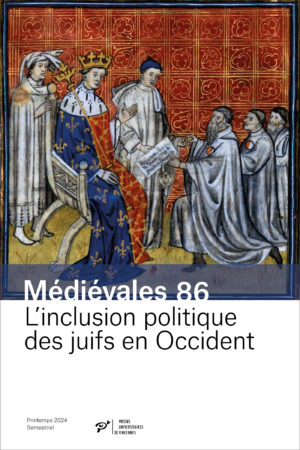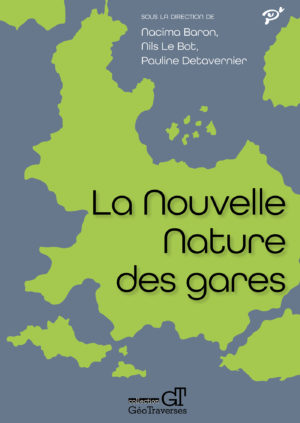Philippe Bernardi : « The role of the Individual in Innovation »
The present article explores the question of innovation through the study of the biography of a mason who worked in Aix-en-Provence around 1450. The important documentation gathered concerning this ordinary craftsman reveals, through concrete examples, the conditions and the reasons which led to some of the minor changes, or the odd jobs, which animate the history of technology. The examples proposed illustrate three possible approaches to change as suggested by the exercise of the profession. They demonstrate at the same time the multiplicity and the imbrication of the factors which contribute to explain the process of innovation, as well as its hazardous character.
Anne-Marie Flambard Héricher : « The Production of Stoneware : A Matter of Taste »
In the late Middle Ages, a new ceramic product made its appearance in several regions : stoneware. A minor product at first, it progressively came to constitute the exclusive production of certain workshops. Two conditions are necessary for its fabrication : the choice the choice of the appropriate clay and its firing in a kiln with very high temperature capacity. Each of these conditions implies multiple technological skills. did the medieval potters succeed in fabricating stoneware fortuitously, or as a result of deliberate research ? Did they benefit from outside technological expereince , or models ? And what was the role of the consumer ? For lack of explicte texts, we must seek the answer in the archaeological, and more particulary the Norman, discoveries.
Jean-Louis Roch : « Innovations and Resistances in the Cloth Industry : Norman Examples »
As the medieval cloth industry expanded, it passed by a whole series of innovations : Dominique Cardon has shown the logic of this technical develpment, whose principal motivation was the increase of productivity (and so the expansion of markets). Particulary under study here, using Norman examples, will be the revolution of carding, the emergence of twill cloth (the first modern fabric), the changes in the types of weave, and the widespread use of the fuller’s mill. But the study of innovation must also consider the resistances to it, and observe the surprising course of technological progress which sometimes operates peculiar « reversals » to the past.
Sophie Lagabrielle : « Glass of the 12th and 15th Centuries. Evolution of a Technic »
Glass quality improved from the 12th to the 15th century in western Europe. During the 12th and the first three quarters of the 13th century, glass composition were based on potassium as a fusing agent. Theophilus in Germany, Theophrast, in France or Italy and Master Gobert, in Normandy, talked about their awn area of production and specific local recipies. Whatever the characteristics of early glass, makers were very concerned about colour. Research on blue, red and even white glass, led them to improve composition and glass production. Thirteenth century and fourteenth compositions were sodic in the South, calcic in the East and potassic in the West, North and Centre. Tableware becomes more frequent and window glass becomes whiter entering into uses in the castles. In th fifteenth century one sees an explosion of glass use, both in tableware (goblets becoming popular) and in the use of glass windows which occur in mansions and nice urban houses.
Catherine Verna : « Reduction of Iron and Innovation : Several Debates on the Social History of Technology »
The study of the technics for the elaboration of iron has been the object of the distinct revival during the past twenty years. The idea of renovation, moreover, is definitely in vogue today. It has therefore seemed interesting to confront once again technology and innovation. Three axis of reflection have been followed : he times, the forms, the stakes. Lastly, as has been shown by recent works, the main, the fundamental, old but always current question still concerns the complex relationships which bind technology and society.
Paul Payan : « Ridiculous ? The Ambiguous image of saint Joseph in the Late Middle Ages »
In the late Middle Ages, when theologians were starting to valorize the image of Saint Joseph the first signs of devotion to the saint appeared, iconography sometimes represented him in an unfavorable light, often interpreted as derisive. The study of a corpus of iconographic documents, when compared with texts, shows however that this phenomenon was a minor one, and that in a way it has contributed to the valorization of the saint, even before the development of his cult.
Alain Mounier Kuhn : « War Injuries and Armament in the Middles Ages in the Latin West »
Armament in the Middle Ages has very seldom been considered from the point of view of induced injuries and the dgree of safety that defensive armament could give to the fighters. Despite the continuous efforts made to protect themselves and to adjust their defensive armament to the « improvements » of offensive weapons, fighters, and above all infantrymen, have, with few exceptions, never been actually well protected. Casualties at war were therefore infinitely more numerous than is usually believed.
Mario Ascheri : « Forms of Law in Communal Italy : The Statutes »
The statutes were the most prevalent and characteristic form of production of legal standards in communal Italy in the twelfth to fifteenth centuries. From custom to statute, a notable discontinuity may be observed, cultural rather than juridical, but above all political. There was yet another discontinuity between the statutes and the common law taught in the university, which asserted itself from the thirteenth century on, endowing the jurist with a primacy which was to remain traditional in Italy.






